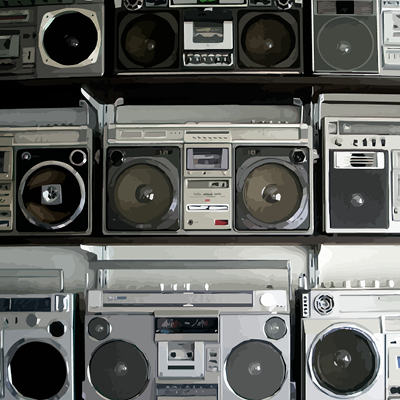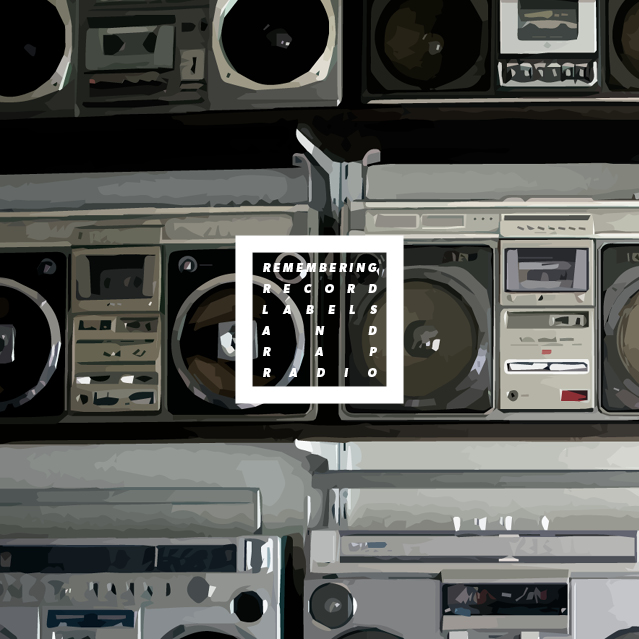Reading through some of my interviews with rappers who released music in the late ’80s, the overwhelming message is that everybody knew that they were going to get ripped off to some extent, but they were young and inexperienced and just wanted to hear their song on the radio. Aaron Fuchs and Stu Fine, who headed the Tuff City and Wild Pitch labels respectively, seem to be the targets for the brunt of these complaints. That being said, even though many of these MCs no doubt wished that they could throw both of these characters into an active volcano at various stages over the years, they also appreciate the fact that these guys gave them a platform to release their music during a period when the major labels were reluctant to take a gamble on most hip-hop projects. The importance of getting a track on played by Kool DJ Red Alert, Chuck Chillout or Mr. Magic during that period can’t be understated, as those guys were the key to breaking new artists and launching the careers of many crews in the formative days of rap in New York.
As the music industry began to embrace/exploit hip-hop in the early ’90s, radio continued to play an important role. The Stretch Armstrong Show with Bobbito on WKCR in New York provided a proving ground for hungry new MCs to showcase their raw abilities and build up a buzz. Future heavyweights such as Nas, Big L and Mad Skillz impressed during late-night rhyme sessions, while Ol’ Dirty Bastard’s appearance inspired Elektra A&R Dante Ross to travel to the station to meet and eventually sign him to a deal. Meanwhile, Sway and King Tech’s Wake-Up Show in LA provided such legendary moments as the Hieroglyphics vs. Hobo Junction battle and were instrumental in supporting rap talents such as Eminem, Rass Kass and Chino XL.
Underground rap radio also provided a valuable outlet for the independent vinyl explosion of the mid ’90s, which provided an opportunity for former major label casualties such as RA The Rugged Man and the Hieroglyphics and rising talents like J-Live to make a respectable living from slinging self-released 12″ singles. The rise of the internet and online vinyl stores such as HipHopSite and SandboxAutomatic ushered in new opportunities for crews such as Company Flow, Rhymesayers and Jedi Mind Tricks, but the bubble soon burst as the market became flooded and singles went from selling 20,000 to only a couple of thousand per release. It would later be revealed that many of these artists never saw a cent from certain shady distribution companies, harking back to the bad old days of the ’80s and proving the adage that no matter how much some things change, the more things stay the same.
The rise of blogs and the associated file-sharing services from 2005 onwards gave the record industry another major kick in the pants, but resourceful MCs and DJs were able to translate this increased exposure into busy international touring careers as CD sales plummeted. It became more important to keep your name current as everybody and their grandmother started releasing music, and it quickly became commonplace to release new freestyles, videos and free mixtapes on a weekly basis in order to remain relevant. Underground radio was by now a largely online concern, with podcasts and streaming mix shows, as the larger terrestrial outlets became programmed via survey.
Despite this fragmentation, the widespread adoption of Twitter has provided the closest thing we now have to a unified experience as far as breaking news and music, and it provides this era’s answer to the dominant influence of ’80s and ’90s rap radio. Major labels continue to merge into each other or downsize, but the industry machine has proved that it can still churn out hit-makers like Rihanna regardless, while independent artists still have the chance to break through if they can diversify themselves enough to get some corporate money to support their cause. At the end of the day, the fact remains that everyone who makes music just wants the chance to be heard, regardless of the medium.
Keep up with Robbie’s weekly ‘No Country For Old (Rap) Men’ here.


